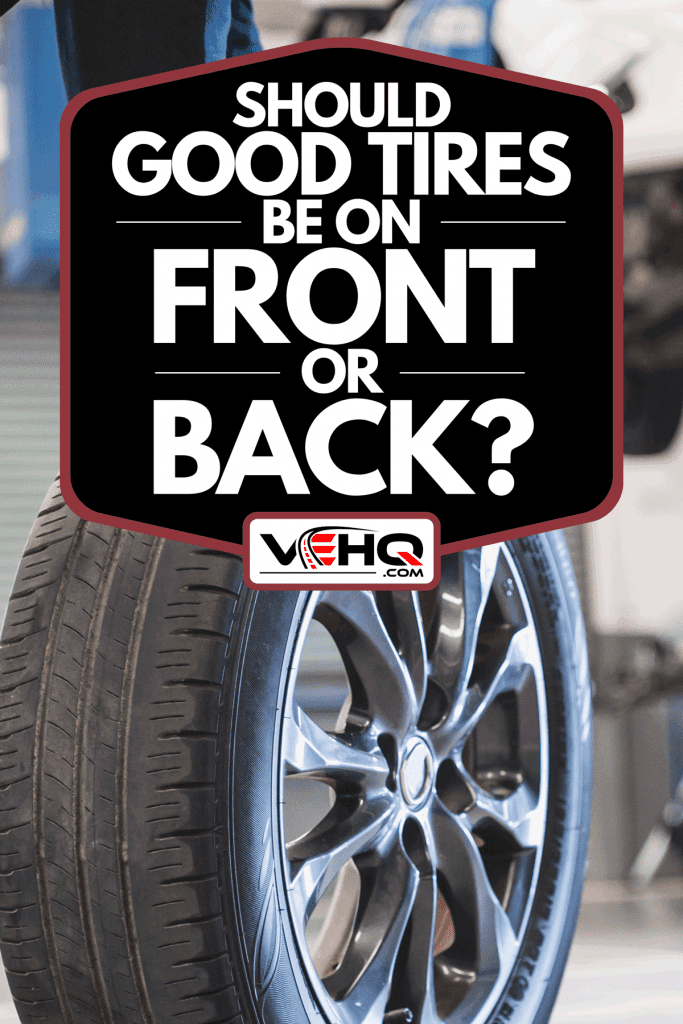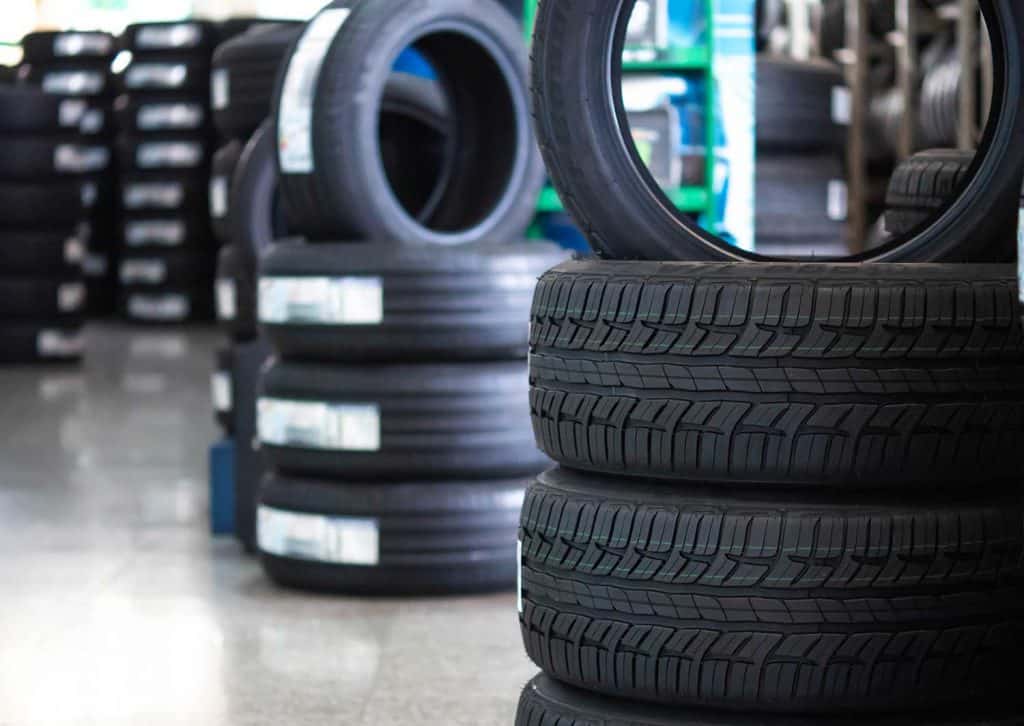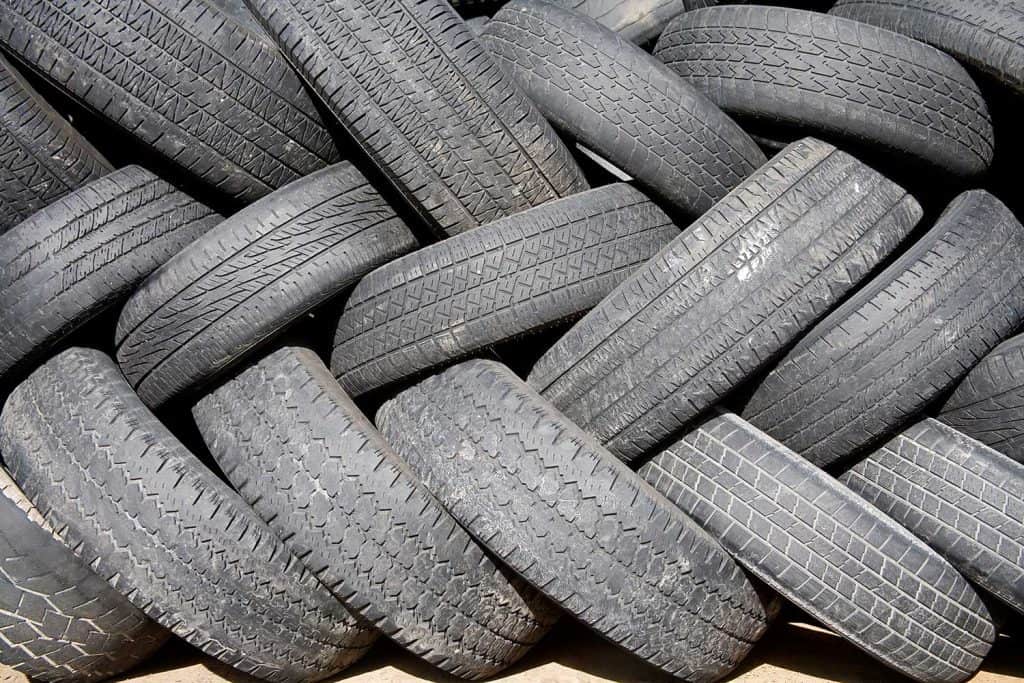Are you getting ready to replace a couple of tires on your vehicle? Maybe two of your tires are more worn than the others. Whatever the case, you are likely wondering if the new/good tires should go on the front or the back. Don't worry; we researched the topic and found the best answer to this question.
Ideally, you should replace all four tires at once. However, if you need to replace only a couple or realize some are more worn than others, the new or less worn tires should always go on the back, and the old tires should be moved to the front.
You now know where to place good tires, but you probably have other questions. Keep reading to discover if all tires need to be the same brand, if you can use different tires on the front and back of your car, and which tires wear faster along with other frequently asked questions.

Should Good Tires Go on the Front or Back
There are multiple scenarios in which you could find yourself needing to replace one or two of your tires instead of all four. There are also reasons you may have a couple of tires that are better than the others.
In these situations, the good tires should always be placed on the back.
Whether your vehicle is front-wheel drive, rear-wheel drive, all-wheel drive, or four-wheel drive, the rear tires are the ones that create stability.
If those tires have worn tread or other imperfections, it will impact that stability. This is why it is important to have your tires rotated and balanced regularly.
On front-wheel drive vehicles, the front tires wear out faster than the back tires. However, on all-wheel-drive vehicles, the back tires may wear quicker.
Keeping them rotated will allow them to wear more evenly. Imbalanced tires will also cause imperfections that can affect the stability of the car.

Can You Use Different Tires for the Front and Back?
Using different tires on the front and back of your vehicle is not recommended, including different brands.
This is because any differences in the tire tread, construction, or size will interfere with the vehicle's stability—unless specifically called for by the vehicle manufacturer.
Is it Illegal to Have Different Tires on Your Car?
Although many areas, including the United States, do not have laws against using different tires on your car, some places, such as Australia, have made it illegal unless uniform tires are not available.
However, each axle must have tires of the same size, tread, and brand.
Can You Replace One Tire with a Different Brand?
Changing one tire with a different brand is not a good idea. Different brands produce tires with different treads and other details.
This is true even if the tires look almost identical. Therefore, installing different brand tires on your vehicle can affect the way it drives, causing you to have less control and stability.

Can You Switch Front and Back Tires?
Switching the front and back tires isn't just something you can do—it's something you should do.
However, the order in which the tires are switched matters. Use the following guidelines to help you determine where each tire should be relocated when rotating them.
FWD Same Size Tires
If your vehicle is front-wheel drive and all tires are the same size, swapping the front and back tires is a pretty straightforward task.
You'll move the front tires directly to the back on the same sides. For example, the left front tire will move to the left back, and the right front tire will move to the right back.
The back tires will be a bit different, going to the front on opposite sides. For example, the right rear tire will replace the left front, and the left rear tire will replace the right front.
AWD, 4x4, & RWD
If your vehicle is all-wheel drive, four-wheel drive, or rear-wheel drive, the back tires will move to the front on opposite sides, and the front tires will move to the opposite sides on the rear axle.
To put this into perspective, the left front will go on the right rear, and the right front will go on the left rear. The same goes for the back tires. The left back tire will move to the front right, and the right back tire will move to the front left.
Alternate RWD, 4x4, & AWD
For alternate rear-wheel drive, four-wheel drive, and all-wheel drive vehicles, you'll use the opposite pattern of front-wheel-drive cars.
The back tires will move directly to the front axle on the same sides. However, the front tires will crisscross, with the front right tire moving to the back left and the front left moving to the back right.
Non-Directional Tires
When dealing with non-directional tires, you'll need to be careful. You cannot move the front tires to the back or vice versa.
Instead, you will switch the back tires to opposite sides, doing the same with the front axle. For instance, the left front tire will switch places with the right front tire, and the right rear tire will trade places with the left rear tire.
Directional Tires
Directional tires are quite easy to switch. You'll simply move the front tires directly to the back and the back tires directly to the front. Therefore, the front right will replace the back right, and the front left will replace the back left.
Which Tires Wear Faster on a 4x4?
When dealing with front-wheel drive vehicles, the front tires wear faster. However, for 4x4 vehicles and rear-wheel drive, the back tires typically wear faster than the front. Use the patterns above to rotate your tires, helping them wear more evenly.
Why is it Best for Tires to Wear Evenly?
When you think about it, you may not consider it bad for two tires to wear more quickly than the others. In fact, you may find the idea of purchasing two tires instead of four more appealing. However, unevenly worn tires can cause you to have less control of your vehicle.
We already know that the back tires are responsible for your car's stability, and the front tires on most vehicles take on the task of turning and carrying the most weight. Therefore, it's equally important for them to be even.
What if I Only Need to Replace One Tire?
Do you have a flat tire? If it is not fixable, you are likely considering replacing only one tire. However, replacing only one tire at a time is not advisable. You should always purchase tires in pairs, whether it be two or four at a time.
If all your other tires are in equal condition, you will throw off the stability of your vehicle by adding one tire that has different wear. That one wheel will accelerate, brake, and turn differently than the others.
In addition, it could interfere with your vehicle's sensing system. For example, anti-lock brakes and traction control systems may not be able to properly interpret signals from your tires if one is significantly different from the others.
In Closing
Ideally, all four tires will need to be replaced at the same time. This is generally accomplished by regularly rotating them.
However, things don't always work out as we plan. You may have a blowout or forget to rotate your tires. Whatever the reason, you will always place the new/better wheels on the back axle.
If you have more questions about tires, we're here to help. In the meantime, check out these other related posts:
